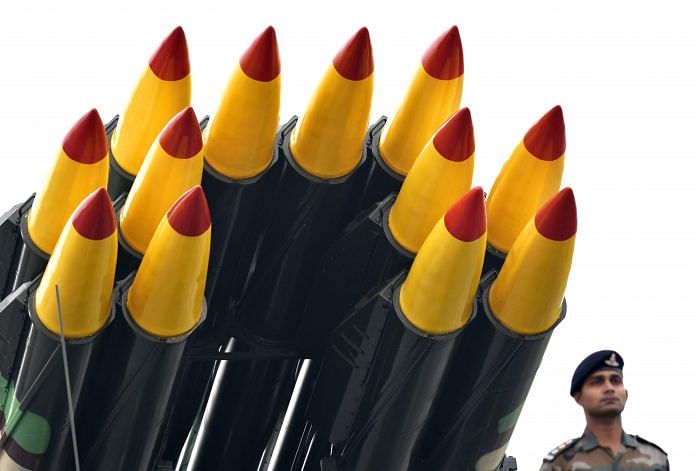India joins the regime at a time when export regulation of dual-use technology items have become increasingly complex.
Last week, India joined the Wassenaar Arrangement (WA) as the 42nd member. A brief statement issued by the Ministry of External Affairs thanked the members for their support for India’s candidature and declared that “India’s entry into the Arrangement would be mutually beneficial and further contribute to international security and non-proliferation objectives”.
WA is one of the four non-proliferation related export control regimes – the other three being the Australia Group (AG), Missile Technology Control Regime (MTCR) and the Nuclear Suppliers Group (NSG). These are not treaty based but ad hoc groupings of like-minded countries.
Though WA in its present form is the youngest of the four regimes, its precursor, the Coordinating Committee for Multilateral Export Controls (CoCom) was set up in 1950 in an attempt to deny the Soviet bloc access to Western equipment and technologies. With the end of the Cold War, CoCom was wound up because many east European countries became EU and NATO members of EU. With proliferation becoming the new threat, CoCom was reborn as the WA, with the original 17 Western CoCom members as also Russia and a number of former communist states together with Argentina, South Africa and now, India. The basic objective of WA is to contribute to regional and international peace and stability by promoting transparency and greater responsibility in transfers of conventional arms and dual use goods and technologies thereby preventing destabilising acquisitions or acquisitions by non-state actors.
Member states harmonise their national export policies relating to conventional weapons, covered in the Munitions List. Its 22 categories cover small arms and light weapons, tanks and armoured vehicles, marine vessels, aircraft and helicopters. A second control list is the Dual Use Goods and Technologies List divided into 9 categories covering special materials, processing machinery and equipment, electronics, computers, telecommunications, information security, sensors, aerospace and marine systems. Regular exchanges of information take place and member states report all transfers and denials to destinations outside the WA.
With diffusion of technology accelerated by globalisation and the ICT revolution, WA’s role has become more significant. Unlike nuclear and space technologies, which were developed by governments for military use, the new ICT and related technologies like encryption, blockchain systems, surveillance and big data analytics have been developed by the private sector and found early applications in the commercial world. This makes export regulation of dual use technology items both necessary and also complex.
The other three regimes originated during the Cold War but have evolved subsequently. Use of chemical weapons by Iraq during the Iran-Iraq war during the 1980s became the trigger for setting up the AG in 1985. The original membership of 15 Western nations has now expanded to 41 plus the EU. AG seeks to prevent proliferation of chemical and biological weapons by controlling exports or sensitive chemicals, biological organisms and materials, relevant equipment and technologies. India is a party to the Biological Weapons Convention and the Chemical Weapons Convention and will probably join the AG in 2018.
Discussions for curbing missile proliferation began among the G-7 countries in 1983, the same year that India launched its missile programme. In 1987, the MTCR was launched to curb proliferation of missiles with a range of 300 kms and a capable of carrying a payload of 500 kg ie., a nuclear capable missile. Subsequently, the control lists were expanded to cover drones and dual use items including ground and launch support equipment. Last year, India joined the MTCR as the 35th member state.
The NSG (originally called the London Club) came into being in 1975 with seven countries (USA, USSR, UK, Canada, France, Germany and Japan) to address nuclear proliferation challenges by focusing on export controls. The immediate catalyst for it was the Indian PNE in 1974. After the Cold War, NSG control lists were expanded to cover dual use items and technologies.
Membership also grew and currently stands at 48; China became a member in 2004. This decision was politically driven and overlooked China’s proliferation record during the 1980s and 1990s.
After the 1998 nuclear tests, India’s approach towards these regimes began to change. Global terrorism, rising threat of WMD proliferation and the objective of gaining acceptance as a responsible nuclear power contributed to the shift. The 2008 special waiver by the NSG was an acknowledgement of India’s non-proliferation credentials and made possible because of strong US backing. With US support for India’s full membership in all four regimes in 2010, India stepped up its engagement and gradually brought its export control lists and practices into harmony with the regimes.
The abortive push for NSG membership in 2016 failed to take into account the changed geopolitics of a weaker US and an assertive China. Having learnt its lesson, the Modi government chose to pursue its objectives quietly. Given China’s open opposition, the NSG membership will have to wait for better relations between the two countries.
Rakesh Sood is a retired diplomat and Distinguished Fellow at Observer Research Foundation. He was India’s special envoy on disarmament and non-proliferation from 2013 to 2014.






